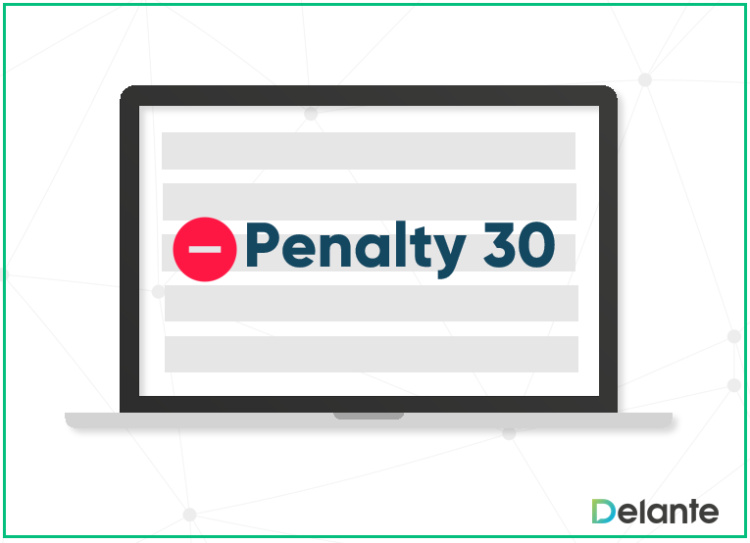Penalty 30
What is Penalty 30? – Definition
Penalty 30 is one of Google’s penalties imposed on webmasters. It results from a violation of guidelines and grey hat and black hat SEO practices. The result of such actions is a sudden decrease in Google ranking – 30 positions down the SERPs. This form of penalty is most often imposed on spammers and is the first alert from Google informing that soon further penalties may be applied to the website. A decrease of 30 positions for keywords in the top3 or top10 means a drop to 3-4 pages of search results, where most users don’t go.
Penalty 30 is imposed on over-optimized websites which:
- include too many keywords,
- have hidden content,
- suddenly rank on many competitive keywords,
- have hidden, topically unrelated links.
Such a penalty is usually imposed on websites with spam content. This is not officially confirmed, but it is said that Google detects such activities manually by Google Quality Rater. Search engine raters check the first 200 results for prospective keywords and decide whether the website should get this penalty.
Penalty 30 and SEO
It’s possible that Penalty 30 will replace the SandBox filter, which consists of temporarily stopping the website’s traffic and affecting the ranking of particular keywords. Penalty 30 is considered to be the first step before the permanent Google penalty: filter or ban.
Naturally, as the ranking in the search results drops, organic traffic suffers as well, and subdomains connected with the parent domain lose their value. This is a warning and, if you follow the guidelines and the white hat SEO rules, you can recover from it.
How to Avoid This Google Penalty?
The penalty was designed to make searching the web easier for users. Penalty 30 is used to enable quick search of detailed keywords and to help find valuable content. The best way to increase web traffic after getting this penalty is to completely rebuild your site, introduce natural internal linking and high-quality content, i.e. introduce white hat SEO practices.



